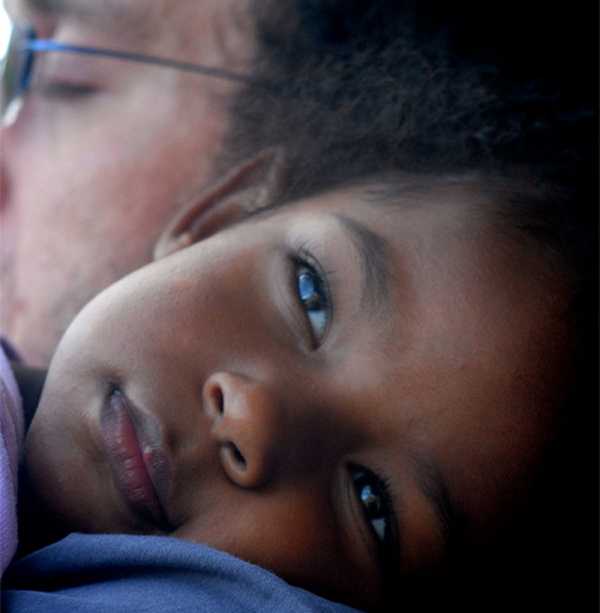I so love ISO
 Monday, July 28, 2008 by
Monday, July 28, 2008 by  Karen Walrond
Karen Walrond 
As a follow up to Tracey's last post, here's a bit more on ISO.
While visiting San Francisco for the BlogHer08 conference, my friend Josh Hallett, armed with his Nikon D3 and mammoth telephoto lens, suggested we shoot the Golden Gate Bridge... at night. I jumped at the chance and then remembered that I had virtually no experience shooting in the dark.
There were a few things I did know. I knew that a Flash would be useless. And I knew that I would need to use a tripod because a night shot would require a super slow shutter speed, so holding the camera steady in my hands would be impossible. I also knew enough to know that I would narrow my aperture to an f/22 because I wanted the entire scene to be in focus.
"So what's your ISO setting?" Josh asked as he deftly detached his camera from the tripod to make room for mine.
"I don't know." I mumbled in the dark. "I've got it set to auto." Mind you, there's nothing wrong with letting your camera do some of the work, but taking control of certain settings such as aperture and ISO will make a world of difference in your ability to capture great images regardless of your lighting conditions.
The very next day, as Tracey mentioned, Me Ra Koh demystified ISO, explaining that ISO control is the digital equivalent of film speed. With your digital SLR, you can adjust your ISO setting to control the amount of light needed to capture your image. On my Nikon D80, I simply press the ISO button on the back of the camera and rotate the main command dial until it displays the setting I want (e.g., 100, 200, 320, etc.) on the control panel.
Shooting a shell on a sunny day at the beach? Set your ISO to 100 or 200. Shooting traces of a sunset at night without a tripod or your seven-year-old blowing out the candles on her birthday cake in a dim room? Set your ISO to a higher number such as 800 or 1000. I captured the shot above with my ISO set to 1000. Keep in mind that the higher the ISO setting, the more grain or noise you'll get in the image. If you're shooting a sunset and you do have a tripod handy to capture the serenity of the scene, you can use a low ISO setting such as 100 or 200 and just decrease your shutter speed to let more light in. By controlling your ISO setting, you expand your ability to capture the images you want... even in the dark.
Do share your shots and tips for shooting in low light conditions in the comments.
(Image and words by Stephanie Roberts -- uploaded by Karen)
**Please note that Tracey got her highs and lows mixed up in yesterdays post...indeed, the higher the ISO number, the MORE noise you will encounter. Ooops! Didn't mean to confuse anyone!! She vows to proof read her post next time! : )




